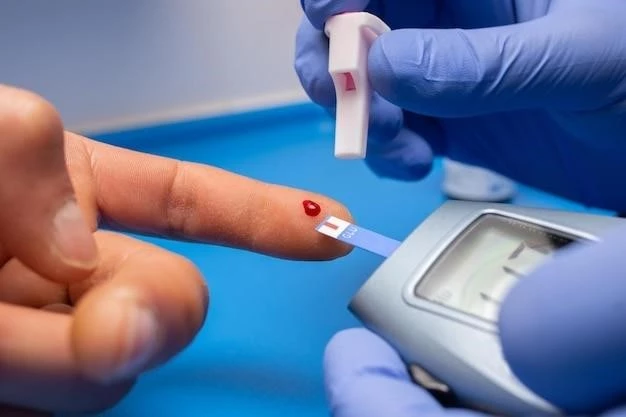Understanding Hyperglycinemia, Non-Ketotic
When delving into the complexities of hyperglycinemia, understanding the non-ketotic form is essential. This metabolic disorder directly impacts the glycine cleavage system, a crucial component in neurotransmitter function. Explore the intricate interplay of glycine, glycine receptors, and key enzymes like glycine decarboxylase and glycine transaminase in this condition.
Introduction to Hyperglycinemia
Hyperglycinemia, specifically non-ketotic hyperglycinemia, is a rare metabolic disorder characterized by elevated levels of glycine in the body. This condition is also known as glycine encephalopathy, affecting the central nervous system. Glycine, an important neurotransmitter, plays a crucial role in the central nervous system. The primary cause of non-ketotic hyperglycinemia is a deficiency in the glycine cleavage system, leading to impaired glycine metabolism.
In this disorder, glycine accumulates in the body due to defects in enzymes such as glycine decarboxylase and glycine transaminase, disrupting the glycine-serine interconversion process. High levels of glycine can result in severe neurological symptoms, including seizures, developmental delays, hypotonia, and intellectual disabilities.
Early diagnosis of hyperglycinemia is essential for prompt intervention and management. Physicians use a combination of clinical symptoms, biochemical tests, and genetic analysis to confirm the presence of this disorder. Treatment aims to reduce glycine levels, manage symptoms, and support overall well-being. Research into new therapeutic approaches and genetic therapies offers hope for individuals affected by hyperglycinemia in the future.

Causes of Hyperglycinemia
The primary cause of hyperglycinemia, particularly non-ketotic hyperglycinemia, is attributed to defects in the glycine cleavage system. This system is responsible for breaking down glycine, a critical amino acid and neurotransmitter. Genetic mutations affecting enzymes within the glycine cleavage system, such as glycine decarboxylase and glycine transaminase, lead to the accumulation of glycine in the body.
Additionally, alterations in the genes encoding the glycine receptor or transport proteins can also contribute to elevated glycine levels. These genetic variations disrupt the normal processing and clearance of glycine, resulting in the manifestation of hyperglycinemia symptoms.
In rare cases, environmental factors or secondary conditions may exacerbate hyperglycinemia. It is crucial for healthcare providers to conduct thorough genetic testing and metabolic evaluations to identify the underlying causes of hyperglycinemia in affected individuals. Understanding the specific genetic and biochemical factors contributing to this disorder is essential for tailored treatment and management strategies.
Symptoms and Diagnosis
Hyperglycinemia presents with a range of symptoms related to central nervous system dysfunction. Individuals affected by this condition may experience seizures, developmental delays, hypotonia (low muscle tone), apnea (pauses in breathing), and intellectual disabilities. These neurological manifestations are attributed to elevated levels of glycine impacting neurotransmission.
Diagnosing hyperglycinemia involves a comprehensive approach. Healthcare providers consider clinical symptoms, biochemical markers such as glycine levels in blood or cerebrospinal fluid, and genetic testing to confirm the presence of this disorder. Genetic analysis plays a crucial role in identifying mutations in genes associated with the glycine cleavage system or glycine metabolism.
Early detection of hyperglycinemia is vital for initiating appropriate treatment and management strategies. As symptoms can vary in severity and presentation, a thorough diagnostic workup is necessary to accurately identify individuals affected by this metabolic disorder. Collaborating with healthcare professionals specializing in metabolic disorders can aid in the timely diagnosis and intervention for individuals with hyperglycinemia.
Understanding Glycine
Glycine is a vital amino acid that serves as a neurotransmitter in the central nervous system. It plays a crucial role in the functioning of the glycine receptor, which is involved in inhibitory neurotransmission. Glycine is also a key component of the glycine cleavage system, responsible for breaking down glycine into simpler compounds.
In the context of hyperglycinemia, disruptions in glycine metabolism lead to elevated levels of glycine in the body. This excess glycine can impair neurotransmission processes, contributing to the neurological symptoms observed in individuals with hyperglycinemia. Glycine is involved in the regulation of neuronal excitability and synaptic transmission, highlighting its significance in neurological function.
Understanding the intricate role of glycine in neurotransmission and metabolism is essential for comprehending the pathophysiology of hyperglycinemia. Research into glycine-related pathways and the glycine cleavage system continues to provide insights into the mechanisms underlying this metabolic disorder. By expanding our knowledge of glycine’s functions, we can enhance diagnostic procedures and develop targeted therapeutic approaches for individuals affected by hyperglycinemia.
Mechanism of Hyperglycinemia
Hyperglycinemia, particularly the non-ketotic form, involves a disruption in the glycine cleavage system, leading to impaired glycine metabolism. This metabolic disorder stems from genetic mutations affecting enzymes such as glycine decarboxylase and glycine transaminase, crucial for glycine breakdown. As a result, glycine levels become elevated in the body, affecting neurotransmission and neurological function.
The excess glycine interferes with inhibitory neurotransmission mediated by the glycine receptor, contributing to the neurological symptoms associated with hyperglycinemia. Disruptions in glycine metabolism also impact the glycine-serine interconversion process, further exacerbating the accumulation of glycine.
Understanding the mechanism of hyperglycinemia involves unraveling the intricate interplay of enzymes, receptors, and metabolic pathways involved in glycine processing. Research efforts focus on elucidating the molecular mechanisms underlying this disorder to develop targeted interventions that can help restore glycine balance and alleviate symptoms in affected individuals.
By comprehensively studying the metabolic pathways affected by hyperglycinemia, researchers aim to uncover new therapeutic targets and diagnostic tools that can improve outcomes for individuals living with this rare metabolic disorder.
Treatment and Management
The treatment and management of hyperglycinemia involve a multifaceted approach aimed at reducing glycine levels, alleviating symptoms, and supporting overall well-being. Individuals diagnosed with this metabolic disorder often require lifelong monitoring and intervention to optimize outcomes.
Therapeutic strategies for hyperglycinemia may include glycine-reducing agents, such as benzoate or sodium benzoate, which help lower glycine levels in the body. Additionally, supportive care focusing on symptom management, nutritional support, and early intervention for developmental delays is crucial.
Close collaboration with a team of healthcare professionals, including genetic counselors, metabolic specialists, neurologists, and developmental experts, is essential for comprehensive care. Regular monitoring of glycine levels and neurological development can guide treatment adjustments and ensure optimal management of the condition.
Research into novel therapies, including gene therapy and enzyme replacement strategies, offers promising avenues for the future treatment of hyperglycinemia. By staying informed about emerging treatment modalities and participating in clinical trials, individuals with hyperglycinemia and their families can contribute to advancing medical knowledge and improving outcomes for this rare metabolic disorder.
Research and Future Perspectives
Ongoing research in the field of hyperglycinemia, particularly non-ketotic hyperglycinemia, continues to expand our understanding of the genetic and biochemical mechanisms underlying this metabolic disorder. Scientists are investigating novel therapeutic strategies, including gene therapy, enzyme replacement therapy, and small molecule interventions targeting glycine metabolism.
Future perspectives in hyperglycinemia research aim to develop personalized treatment approaches based on individual genetic profiles and metabolic characteristics. By leveraging advancements in precision medicine and gene editing technologies, researchers strive to provide tailored interventions that address the specific genetic defects contributing to hyperglycinemia.
Collaborative efforts among clinicians, researchers, and advocacy groups are essential for pushing the boundaries of knowledge in hyperglycinemia and accelerating the development of innovative therapies. Engaging in patient registries and clinical trials can provide opportunities for individuals affected by hyperglycinemia to access cutting-edge treatments and contribute to the advancement of medical science.
By supporting research initiatives and fostering collaboration within the scientific community, we can pave the way for improved diagnostic tools, therapeutic options, and ultimately enhance the quality of life for individuals living with hyperglycinemia.
Conclusion
In conclusion, hyperglycinemia, specifically non-ketotic hyperglycinemia, is a complex metabolic disorder characterized by elevated glycine levels, impacting neurological function. Understanding the genetic and biochemical basis of hyperglycinemia is crucial for accurate diagnosis and personalized treatment;
Efforts focused on unraveling the underlying mechanisms of glycine metabolism and neurotransmission offer hope for advancing therapeutic interventions for individuals affected by hyperglycinemia. Collaborative research endeavors and patient advocacy play a vital role in driving innovation and improving outcomes for this rare metabolic disorder.
By staying informed about the latest developments in hyperglycinemia research and actively participating in clinical initiatives, individuals, families, and healthcare professionals can contribute to enhancing the understanding and management of this condition. Together, we can work towards a future where individuals with hyperglycinemia receive timely diagnosis, tailored treatments, and compassionate care to lead fulfilling lives.
